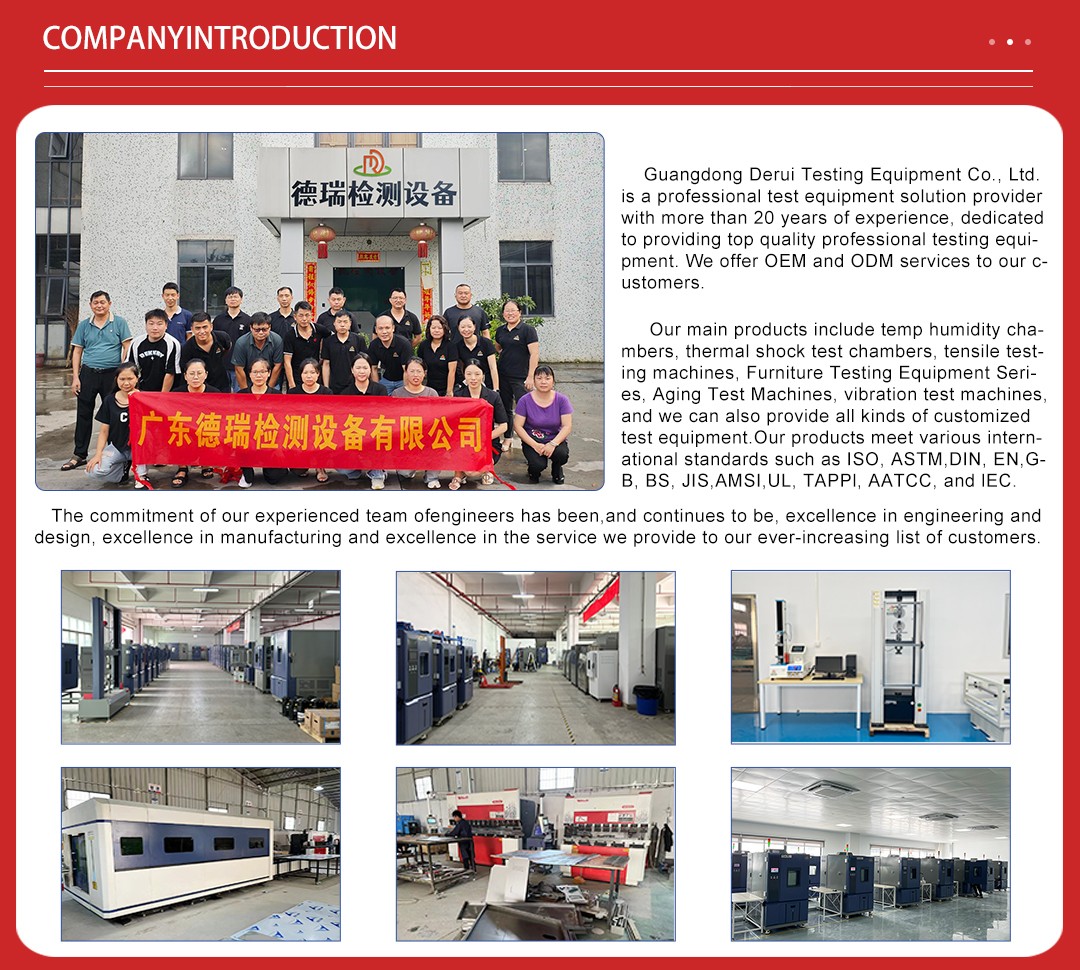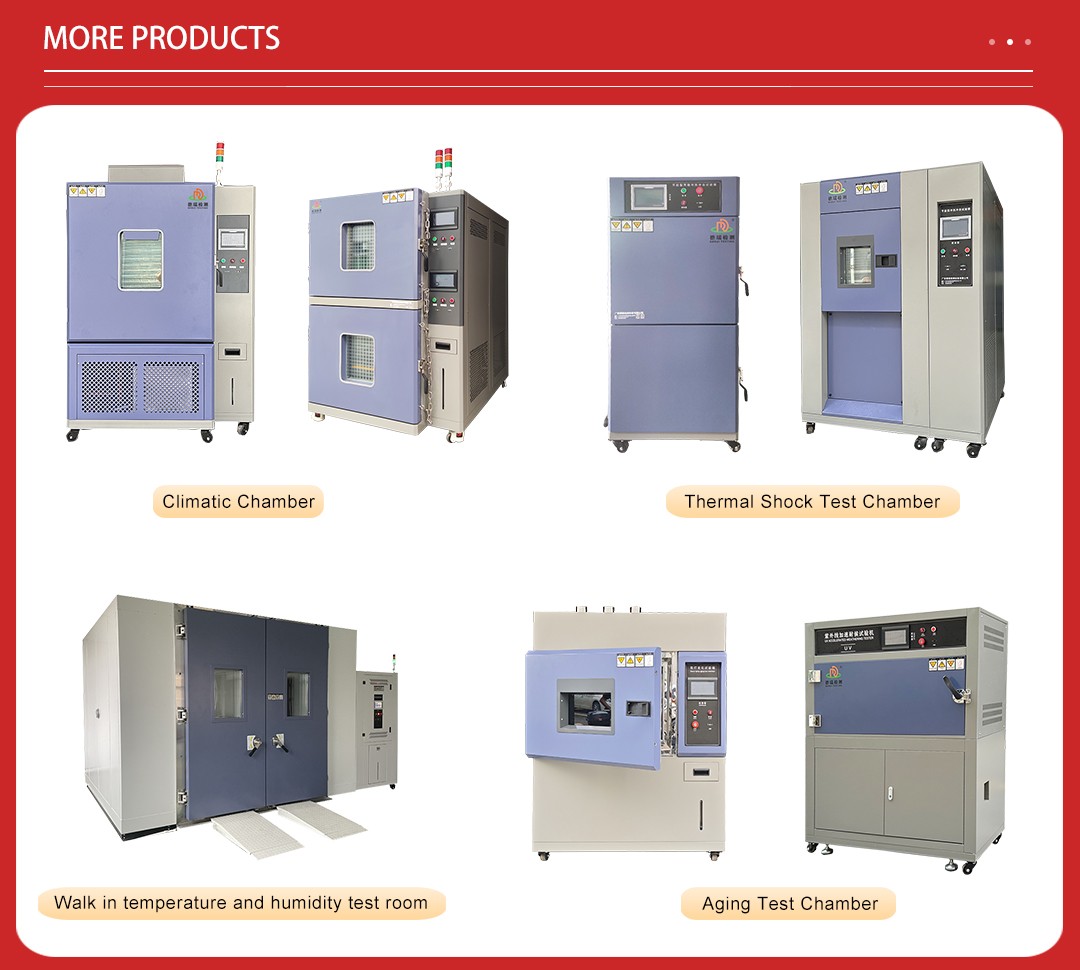
The Rapid Temperature Change Chamber (RTCC) is a specialized environmental testing apparatus designed to evaluate the performance and reliability of electronic components and devices under extreme temperature conditions. This advanced equipment is essential in the electronics industry for simulating real-world temperature fluctuations, ensuring that electronic products can withstand a wide range of thermal stresses.

The RTCC finds extensive applications in various sectors of the electronics industry, including:
1. Consumer Electronics: Testing the durability of smartphones, laptops, and other consumer devices under extreme temperatures.
2. Automotive Electronics: Evaluating the performance of electronic control units (ECUs), sensors, and other automotive electronic components in harsh environmental conditions.
3. Aerospace and Defense: Ensuring the reliability of avionics, communication systems, and other critical electronic equipment in extreme temperature environments.
4. Industrial Electronics: Assessing the robustness of industrial control systems, sensors, and actuators in demanding thermal conditions.
5. Medical Devices: Validating the performance of electronic medical equipment under varying temperature scenarios to ensure patient safety and device efficacy.

The RTCC boasts several key features that make it an indispensable tool for electronic testing:
1. Rapid Temperature Transition: Capable of achieving swift temperature changes, from -70°C to +180°C, at rates exceeding 15°C per minute. This rapid transition capability is crucial for simulating real-world temperature fluctuations and thermal shock conditions.
2. High Precision Temperature Control: Equipped with advanced temperature control systems, including high-precision sensors and PID controllers, ensuring temperature stability and uniformity within ±0.5°C.
3. Programmable Test Profiles: Allows users to create customizable test profiles with variable temperature ramps, dwell times, and cycling patterns to mimic specific environmental conditions.
4. Humidity Control: Incorporates humidity control systems to simulate combined temperature and humidity stresses, essential for evaluating the effects of moisture on electronic components.
5. Data Logging and Analysis: Features integrated data logging capabilities, enabling real-time monitoring and recording of temperature, humidity, and other relevant parameters. Advanced software tools facilitate data analysis and report generation.
6. Safety Features: Includes safety features such as emergency stop switches, over-temperature protection, and failsafe mechanisms to ensure operator safety and prevent equipment damage.
The RTCC offers several significant advantages for electronic testing:
1. Accelerated Testing: Rapid temperature transitions and programmable test profiles enable accelerated testing, reducing the overall test duration and expediting product development cycles.
2. Real-World Simulation: The ability to simulate real-world temperature fluctuations and thermal shock conditions ensures that electronic components are tested under realistic and challenging environmental scenarios.
3. High Precision and Repeatability: Advanced temperature and humidity control systems provide high precision and repeatability, ensuring consistent and reliable test results. 4. Comprehensive Evaluation: The integration of temperature, humidity, and other environmental stresses allows for a comprehensive evaluation of electronic components' performance and durability.
5. Cost-Effective: By identifying potential failures and weaknesses early in the development process, the RTCC helps minimize costly field failures and warranty claims.

The RTCC is designed to meet various international and industry-specific standards, ensuring the validity and reliability of test results. Some of the key standards include:
- IEC 60068-2-14: Environmental testing - Part 2-14: Test N: Change of temperature. This standard specifies the methods for testing the resistance of electronic components to rapid temperature changes.
- JEDEC JESD22-A104: Temperature Cycling. This standard outlines the procedures for temperature cycling tests on electronic components, ensuring their reliability under varying temperature conditions.
- MIL-STD-810: Department of Defense Test Method Standard for Environmental Engineering Considerations and Laboratory Tests. This standard provides guidelines for environmental testing of military and aerospace electronic equipment.
- ASTM D4329: Standard Practice for Fluorescent UV Exposure of Plastics. This standard describes the procedures for evaluating the effects of UV exposure on electronic components, often used in conjunction with temperature testing.

| Model | DR-H204-100 | DR-H204-150 | DR-H204-225 |
| Internal dimension | 400*500*500mm | 500*600*500mm | 600*750*500mm |
| External dimension | 750*1536*1310mm | 750*1636*1410mm | 850*1786*1410mm |
| Temperature(℃) | -20/-40/-70 | -20/-40/-70 | -20/-40/-70 |
| Maximum Current(A) | 22,22,28 | 22,22,28 | 18,18,23 |
| Voltage(V) | Single-phase220V | Single-phase220V | Three-phase380V |
| Temp,range | 0℃;-20℃;-40℃;-70℃~+150℃ |
| Test Method | Pneumatic Operated Door Switch(two/three-zone) |
| Temp.Display Accuracy | 0.01℃ |
| Temp.uniformity | ≤±2.0℃ |
| Temp.deviation | ±0.5℃~±0.2℃(without load) |
| Heating speed | 1℃/min~20℃/min,can be customized |
| Cooling Speed | 1℃/min~20℃/min,can be customized |
| Humid.range | 20%~98%RH |
| Humid.resolution | 0.1% R.H. |
| Humid.uniformity | ±3%RH(without load) |
| Internal chamber material | Stainless steel 304 |
| External chamber material | Stainless steel/paint spray |

Testing Methodology
Conducting tests using the RTCC involves a systematic approach:
1. Test Planning: Define the test objectives, parameters, and profiles based on the specific requirements of the electronic components or devices under test.
2. Sample Preparation: Place the electronic samples inside the test chamber, ensuring proper mounting and electrical connections for monitoring purposes. 3. Programming: Input the desired test profile, including temperature ranges, ramp rates, dwell times, and humidity levels, using the control system's user interface.
4. Test Execution: Initiate the test and allow the RTCC to automatically execute the programmed temperature and humidity cycles while continuously monitoring and logging data.
5. Data Analysis: Upon completion of the test, analyze the recorded data to assess the performance and reliability of the electronic components under the simulated environmental conditions.
6. Reporting: Generate comprehensive test reports, documenting the test parameters, results, and any observations or conclusions drawn from the analysis.
The Rapid Temperature Change Chamber is a vital tool in the electronics industry, enabling manufacturers to evaluate and ensure the performance and reliability of electronic components and devices under extreme temperature conditions. With its advanced features, precise control, and comprehensive testing capabilities, the RTCC plays a crucial role in driving innovation, quality, and reliability in electronic products. By adhering to international standards and offering customizable testing options, the RTCC continues to be an indispensable asset in the development and validation of electronic components and devices.










